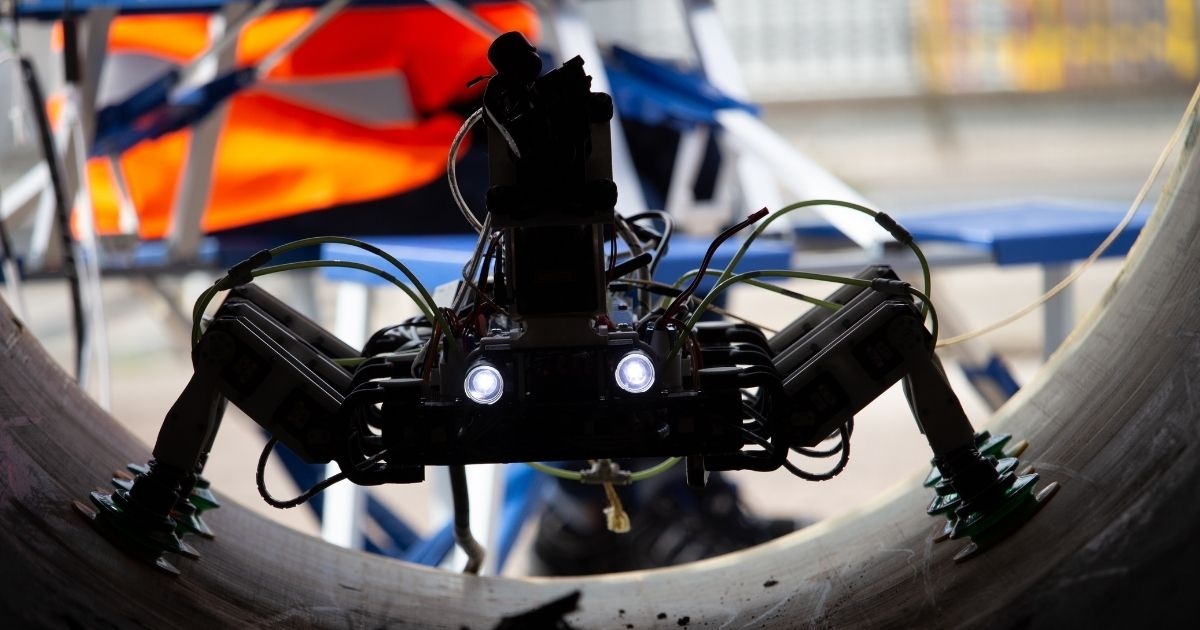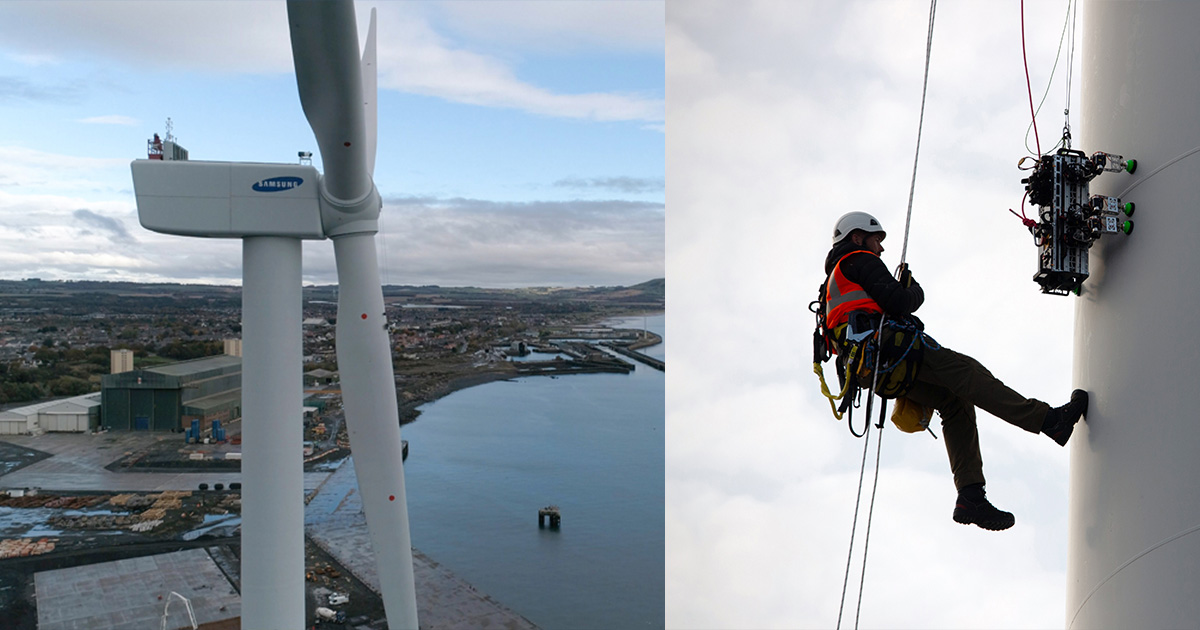BladeBUG: Leading Edge Robotics

As advanced marine robotics continue to transform the way we work at sea, the team at BladeBUG is on a mission to revolutionize offshore wind turbine inspection and maintenance.
Standard O&M work, including any necessary repairs, is typically performed by rope-access technicians, often working in extreme conditions and during restricted weather windows. While this approach encompasses a range of well-established practices, it also results in a number of inefficiencies, including extended turbine downtime and the expensive use of crew transfer vessels.
BladeBUG represents a game changing feat of engineering, one which proposes a safer and more scalable solution to turbine optimization. The six-legged inspect-and-repair robot is the brainchild of Chris Cieslak, an experienced turbine blade designer, who believes that the field of unmanned robotics holds the key to unlocking previously unimagined offshore wind farm efficiencies.
Conceptualization began in 2014, from Cieslak’s shed, before he settled on a unique hexapod design. Funding followed and further steered development toward the present-day modular form, a remotely operable platform capable of deploying interchangeable plug-and-play tools to carry out a particular task at hand; these include: the inspection of blade surfaces for emergent cracks and imperfections; the transmission of data relating to their condition back to mission control in real-time; and the resurfacing of blades when necessary.
 The six-legged modular robot is capable of deploying a range of interchangeable plug-and-play tools to carry out various O&M tasks. (Image credit: BladeBUG)
The six-legged modular robot is capable of deploying a range of interchangeable plug-and-play tools to carry out various O&M tasks. (Image credit: BladeBUG)
COST REDUCTIONS
The most recent version of BladeBUG is the result of a £1 million project supported by The Offshore Renewable Energy Catapult (ORE Catapult) and partly funded by Innovate UK. Studies suggest that BladeBUG could lead to a 30 per cent cost reduction on current blade inspection techniques, with a measurable knock-on effect to the levelized cost of energy (LCOE). (Cost savings could reach as much as 50 per cent for next generation turbines, according to ORE Catapult.) Efficiencies on this scale will come as welcome news to offshore operators looking to ramp up invest in renewable energy infrastructure in deeper waters where sea conditions and faster tip speeds will inevitably exacerbate turbine damage.
 BladeBUG completed sea trials at ORE Catapult’s 7MW Levenmouth Demonstration turbine in late 2020, using its vacuum-powered feet to navigate the varying curvature of blade surfaces. (Photo credit: BladeBUG)
BladeBUG completed sea trials at ORE Catapult’s 7MW Levenmouth Demonstration turbine in late 2020, using its vacuum-powered feet to navigate the varying curvature of blade surfaces. (Photo credit: BladeBUG)
SUCCESSFUL SEA TRIALS
In October 2020, BladeBUG successfully completed sea trials at ORE Catapult’s 7MW Levenmouth Demonstration turbine, off the coast of Fife, Scotland. By scaling a vertically positioned blade, BladeBUG was able to use its vacuum-powered feet to navigate the varying curvature of blade surfaces and transmit real-time data and live video feeds to technicians. In short, the sea trials served to validate Cieslak’s principal assertion: robots can replace manual operations for lengthy deployments in authentic offshore conditions.
Speaking exclusively to ON&T, BladeBUG’s now CEO said: “The results of our latest test represent an historic moment both for us as a company and for the wider offshore wind sector. The use of robotics is the next natural step for offshore wind maintenance and repair and represents a huge opportunity in areas from health and safety to O&M maintenance costs.”
INDUSTRY COLLABORATION
BladeBUG is also a key component of a broader technology initiative, the £4.2 million MIMRee (Multi-Platform Inspection, Maintenance and Repair in Extreme Environments) project, an ambitious cross-sector program that seeks to pool expertise in robotics, AI, marine and aerial engineering, nanobiotechnology and space mission planning to prove that offshore wind maintenance missions can be conducted by unmanned robots.
During these trials, BladeBUG will work in collaboration with an autonomous vessel and teams of drones, using a robotic arm to clean and resurface damaged blades. The final MIMRee system technology trials are set to take place in mid-2021.
For more information, visit: www.bladebug.co.uk
This feature originally appeared in Ocean News & Technology's Magazine January 2021 edition—The Essential 2021 Offshore Toolkit. To read more, access the magazine here.

